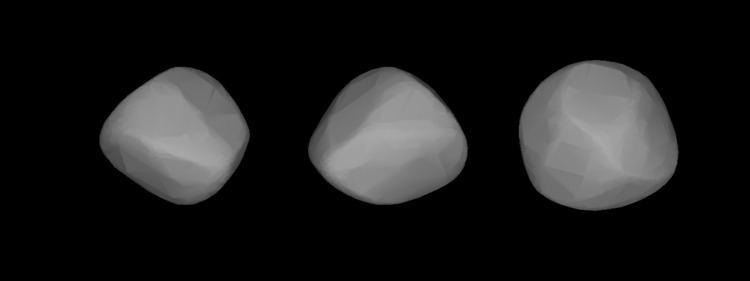Minor planet category Main belt Orbital period 1,518 days | Discovery date May 19, 1851 Aphelion 451.858 Gm (3.020 AU) Discovered 19 May 1851 Named after Eirene | |
 | ||
Pronunciation /aɪˈriːniː/ eye-REE-nee Alternative names A906 QC;A913 EA;1952 TM Similar John Russell Hind discoveries, Other celestial objects | ||
14 Irene is a large main-belt asteroid, discovered by John Russell Hind on May 19, 1851.
14 Irene was named after Irēnē, a personification of peace in Greek mythology. She was one of the Horae, daughter of Zeus and Themis. The name was suggested by Sir John Herschel. Hind wrote,
"You will readily discover that this name [...] has some relation to this event (the Great Industrial Exhibition) which is now filling our metropolis [London] with the talent of all civilised nations, with those of Peace, the productions of Art and Science, in which all mankind must feel an interest."The Great Exhibition of the Works of Industry of All Nations in the Crystal Palace of Hyde Park, London, ran from May 1 until October 18, 1851.
Hind suggested that the symbol for the asteroid should be "A dove carrying an olive-branch, with a star on its head", but an actual drawing of the symbol was never made before the use of graphical symbols to represent asteroids was dropped entirely.
The fairly flat Irenian lightcurves indicate somewhat spherical proportions. There have been four reported stellar occultation events by Irene.
